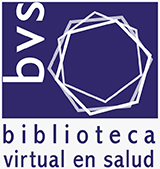FACTORS OF HEART ATTACK RISKS IN WORKERS OF NURSING IN A CENTER OF REFERENCE IN SOUTHERN BRAZIL
Keywords:
Coronary artery/heart disease, risk factors, nursing workersAbstract
Introduction: Nowadays the cardiovascular diseases (CVD), specially the Coronary Heart Disease (CHD), or Coronary Artery Disease (CAD), represent 35% of causes of death of vascular diseases. Objectives: To identify the risk factors that can be modified for CHD/CAD in Nursing Workers who act at the Emergency Room, Obstetric Center, Center and Surgical Intensive Care Units (Pediatric, Adult, Neonatal); to correlate these results with the different categories of nursing as well as with their work shifts and sectors. Methods: Cross-study analysis. A questionnaire was applied aiming at tracking risk factors, blood pressure, anthropometric data, fasting glycemia, total cholesterol (HDL and LDL), triglycerides, as well as Lipp´s Inventory of Stress Symptoms in Adults. Results: Out of 80 participants of the study, 86 % were women aged about 37,7 ± 8,2 years; 26 % were Nurses, 56 % were Nursing Technicians and 17 % were Nursing Assistants. Most Nursing workers belong to the sector of the Intensive Care Unit (45 %) and the daytime was the predominant shift (41,2 %). The most relevant risk factors were the family history (at 1st degree) (86,3 %), the sedentarism (55 %), total high cholesterol (6,3%) and borderline cholesterol level (26,3 %), stress (53,8 %) and overweight (56,3 %). Conclusion: Our study has shown that population presents an increased CVD risk. Monitoring this sample can reveal surprising results in the future since it refers to a young population with predominance of bordering results. Programs should be adopted to facilitate health promotion towards a healthier life style since early in the childhood.
Downloads
Published
How to Cite
Issue
Section

This work is licensed under a Creative Commons Attribution 4.0 International License.












